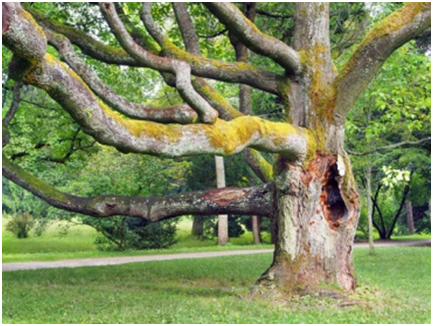What is an Arboricultural Survey?
 If you’ve tried searching for ‘what is an arboricultural survey’ before the release of this article then you’ll have noticed there is quite literally nothing on the internet about it. Despite there being lots of environmental organisations that advertise their abilities to perform arboricultural surveys around the UK not a single one explains what one is on their website. The best you can hope for is a redirect to another type of survey which, usually, isn’t explained either. This is probably due to the people working within ecological services knowing full well what they do, but being blissfully unaware that the general public actually has no idea what any of the definitions are, and how much they pull their hair out when they can’t find out. Hopefully, this will answer some questions.
If you’ve tried searching for ‘what is an arboricultural survey’ before the release of this article then you’ll have noticed there is quite literally nothing on the internet about it. Despite there being lots of environmental organisations that advertise their abilities to perform arboricultural surveys around the UK not a single one explains what one is on their website. The best you can hope for is a redirect to another type of survey which, usually, isn’t explained either. This is probably due to the people working within ecological services knowing full well what they do, but being blissfully unaware that the general public actually has no idea what any of the definitions are, and how much they pull their hair out when they can’t find out. Hopefully, this will answer some questions.
Arboriculture
This is quite simply defined as ‘the cultivation of trees and shrubs.’
Cultivate is defined as ‘to grow or tend,’ ‘nurture,’ and ‘to improve and prepare land.’
So, if we combine those two phrases and put them through the catalyst of a survey, we can assume that an arboricultural survey means that it’s a survey which will help grow, or promote health, of trees and/or shrubs. And that’s essentially it! Arboricultural surveys involve:
- The BS5837 tree survey, which look at the age, health and potential growth of a tree/trees in a designated area. These are generally requested by local councils when applying for planning permission to see how a tree might interfere with a development, or vice-versa.
- Woodland inspections.
- Other tree surveys and even bat surveys.
- Reports and advisory services on arboriculture.
Why might you need an arboricultural survey?
There are a number of reasons you could need a survey conducting. These are a few, although not all of them are included:
- Mortgage purposes: Sometimes your mortgage lender may require that you carry out an arboricultural survey to go alongside your bank valuation survey to prove the longevity of the home and that there are no issues or threats from surrounding trees that could affect the integrity of your home and, as a result, its value.
- Personal safety: surveys are helpful quite simply to asses to risk a tree may put on the safety of the public, yourself or your property. This is particularly important when assessing old trees that are likely to break or be damaged.
- Subsidence: sometimes tree roots can affect the foundation of a building, either by brute force or by altering soil moisture levels below the foundations. A tree survey can assess this too.
Question answered?
Hopefully you’ll already have all the information about arboricultural surveys that you need from the above information, but if you still think there are some grey areas, consider this: the term is more of an umbrella subject that a finite definition. If you want more information, the trick is to look specifically at the type of survey you’re after. For example, Understanding the BS5837 Tree Survey goes through a detailed account of what happens in that particular survey. Have a look if that’s the one you’re after. If not, try finding out specifically which survey you want and hope there’s a good description out there.
We want you, the people of Sussex, to take some ownership of www.sussexgreenliving.co.uk. Forward your suggestions for events, videos, parks and green spaces etc to be added to “your” site.
